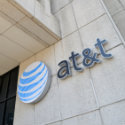
T-Mobile last week announced plans to launch lowband 5G on Dec. 6 with two phones. This week, AT&T reiterated that it too plans to launch lowband 5G with at least one device sometime before the end of this year.
The positioning indicates that the two operators are roughly neck and neck in their race to build out 5G. But their approaches are much different. For example, T-Mobile held a major "uncarrier" media event last week in part to announce its 5G launch plans, while AT&T's Igal Elbaz reiterated the operator's own launch plans in offhand comments this week at an investor event in Barcelona, Spain.
And that isn't the only difference between the operators' efforts:
T-Mobile has been very clear about its pending 5G launch: The service will run on 600MHz across two phones, the Samsung Note 10 and the OnePlus 7T 5G McLaren. It won't cost extra, and it will cover 200 million people across 5,000 cities with speeds around 100Mbit/s.
AT&T has remained strangely vague about its pending launch: AT&T's Elbaz didn't specify what spectrum band the operator would use, noting only that it will be somewhere below 6GHz (it's probably going to be in 700MHz). Nor did he say what phone AT&T will sell (the operator, in January, said it would be a Samsung device). And AT&T has not said whether its lowband 5G service might cost extra. Moreover, Elbaz suggested AT&T's launch of "sub-6GHz" 5G this year won't be nationwide, and that the operator would instead expand the network nationwide by the middle of next year (nationwide in operator parlance generally means 200 million people). Finally, Elbaz said AT&T's lowband 5G will offer "marginal differences" from 4G in terms of speeds, but didn't elaborate.
Both AT&T and T-Mobile already offer 5G in millimeter-wave (mmWave) spectrum in parts of a handful of cities (AT&T counts around two dozen cities while T-Mobile counts just six.) However, 5G transmissions in mmWave spectrum can't travel more than a few thousand feet, and can't penetrate buildings or other structures. But 5G transmissions in lowband spectrum like 600MHz can travel several miles and can penetrate buildings. The only problem is that mmWave spectrum can support much, much faster speeds than lowband spectrum.
The device problem
AT&T's obfuscation may be due to its ability to sell 5G phones that support both mmWave and lowband 5G. Today's initial batch of 5G phones in the US from the likes of T-Mobile, Verizon and AT&T only support 5G in mmWave spectrum and cannot physically support lowband 5G. This will force early 5G enthusiasts to purchase new devices in order to access lowband 5G when it becomes available -- an eye-watering proposition considering today's mmWave 5G phones cost around $1,000.
Thus, operators like AT&T and Verizon may be staying intentionally vague about their lowband 5G launch plans until they are able to sell phones that support both lowband and mmWave 5G. AT&T's Elbaz suggested that will happen in 2020.
Fixed wireless
Interestingly, during his comments this week Elbaz also said AT&T remains interested in providing fixed wireless services via its mmWave spectrum. That's noteworthy considering Verizon is embarking on a major deployment of fixed wireless services under its 5G Home brand using its own mmWave spectrum.
Elbaz explained that AT&T is already deploying fixed wireless services in rural areas in order to meet the requirements of the government's CAF II program. He said the operator plans to begin using 3.5GHz CBRS spectrum for that effort very soon.
But he said that AT&T could also deploy fixed wireless services in urban areas via its mmWave spectrum. He said technology advancements like receivers that customers can install themselves have helped make such a service more economically viable.
Elbaz didn't specifically confirm that AT&T would launch an urban mmWave fixed wireless service, but his mostly positive comments about such a service could indicate that AT&T might do so in the future.
— Mike Dano, Editorial Director, 5G & Mobile Strategies, Light Reading | @mikeddano
About the Author(s)
You May Also Like











